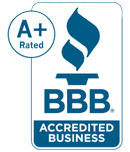Common examples of vandalism
It's natural for human beings to draw, paint and decorate their environments, but when it comes to doing this on another person's property without permission, it's referred to as vandalism and it's unlawful. Vandalism as a crime encompasses a broad range of things.
Vandalism is typically defined as a willful act intended to alter, destroy, deface or significantly change another person's property. It may include the following acts:
-- Keying or using something else to scratch paint off someone's vehicle
-- Breaking windows
-- Defacing a piece of public property
-- Making graffiti on someone's property
-- Egging a person's window or vehicle
-- Spray painting someone's property in order to deface it
-- Slashing a vehicle's tires
-- Changing or pulling down street signs
-- Damaging or kicking someone's property
-- Defacing a park bench in any way
Charges relating to vandalism may also arise out of a person simply possessing objects or tools that are likely to be used for the purpose of committing vandalism. These objects might include spray paint, normal paint, permanent markers, glass cutters, drill bits or other substances and items.
Sometimes Wisconsin residents are wrongly accused of vandalism. For example, you might get arrested simply because you were around some friends who had committed vandalism after the fact. Or, maybe you were with a group of friends who started to vandalize property and police associated you with them. If you've been wrongly accused of vandalism, you can defend yourself against the charges in court with the assistance of an experienced criminal defense attorney.
Source: FindLaw, "Vandalism," accessed June 02, 2017









 262-232-6699
262-232-6699





